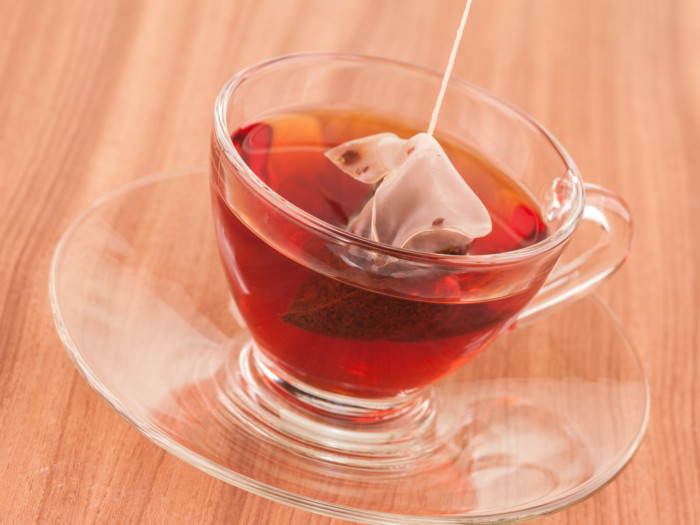When you steep tea, you release the active ingredients and flavor of the tea leaves into your beverage, making it the crucial step in the production of any tea variety.
What is Steeping Tea?
When you steep tea, it means that you are soaking a tea bag or loose-leaf tea in hot or boiling water. Tea can be made from hundreds of different substances, but each has a slightly different chemical composition and reacts differently to water. As a result, the time and temperature that you steep tea will differ; if you steep tea for too long, the flavor may become bitter or overpowering, while steeping for too short a time might cause you to miss out on some of the active ingredients and flavors. [1]
While water is the most common liquid in which to steep tea leaves, you can steep things in milk, as well. However, milk has a much stronger taste, so you will need to brew a very strong tea to cut through the viscosity and flavor of milk.

Steeping is the soaking in liquid (usually water) of a solid, usually so as to extract flavours or to soften it. Photo Credit: Shutterstock
How Do You Steep Tea?
You can steep tea like oolong tea, loose tea, and more. Steeping tea is quite simple, and can be done in a tea infuser, a teapot, or simply in a mug with a tea bag. That being said, as mentioned, different teas will need to be steeped in for different amounts of time. Some teas may only require 1-2 minutes before the flavor is ideal, while others may require 10-20 minutes of steeping, or even longer! If you want to have a great cup of tea, knowing the ideal range of time to steep the leaves is critical.
Loose Tea
Loose-leaf tea is typically steeped for a slightly longer time than a concentrated tea bag, as tea bags are already filled with crushed leaves, which will more readily release their active ingredients. In some tea varieties, however, loose-leaf and tea bag varieties will be steeped for the same amount of time. [2]
Green Tea
When steeping green tea, you will want to bring the water to a boil, but then allow it to cool for 1-2 minutes before beginning the steeping process. Steep green tea bags for 1-3 minutes, but brew green loose leaf tea for 2-4 minutes. [3]
Black Tea
For black tea, you will want to let the water boil and then immediately pour it over the tea leaves. Whether you are using a tea bag or loose leaves, you will want to steep this tea for 3-5 minutes, depending on how strong you wish the tea to be.
Oolong Tea
If you want to brew oolong tea, you will similarly use boiling water immediately on the leaves. For an oolong tea bag, you will steep the tea for 3-5 minutes, whereas for loose-leaf varieties, you will steep for 5-7 minutes for an ideal cup. [4]
White Tea
This popular variety of tea should be steeped in water just below boiling. The tea bag variety of white tea brews very quickly, requiring only 30-60 seconds for a tasty, full-bodied brew. Loose-leaf varieties, on the other hand, take about 2-3 minutes for a full steep. [5]
Chamomile Tea
You should steep chamomile tea in boiling water, and for both loose-leaf and tea bag types, you will want to let the steeping go on for about 5 minutes. [6]
Difference Between Brewing & Steeping Tea
When you say brewing tea, you are actually referring to the entire process of making tea, including all of the preparation and additional ingredients you may add, such as sweeteners or spices. Steeping tea is a specific part of that preparation process, namely when you soak the primary tea ingredients in hot or boiling liquid to extract the active ingredients and flavors from the tea variety.
